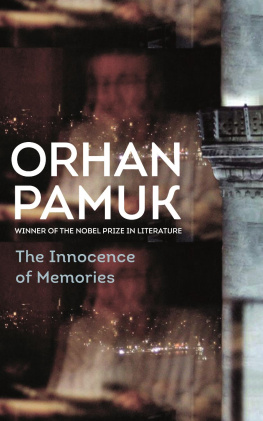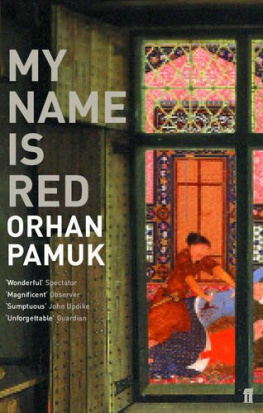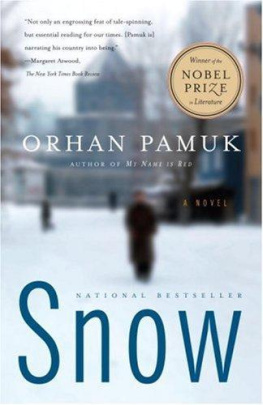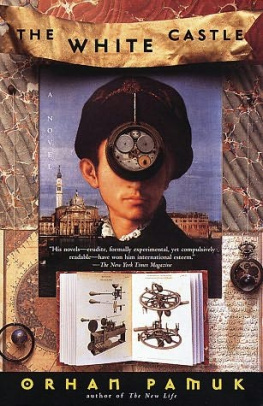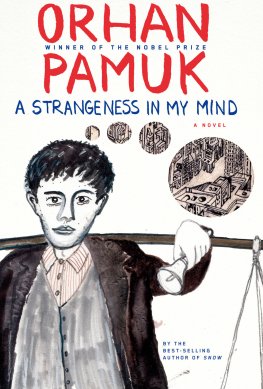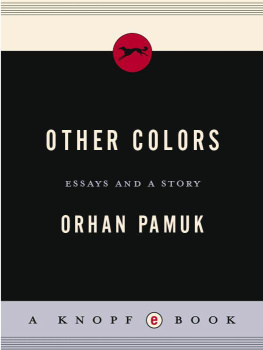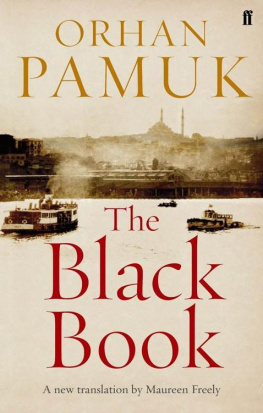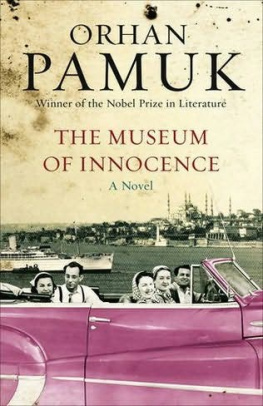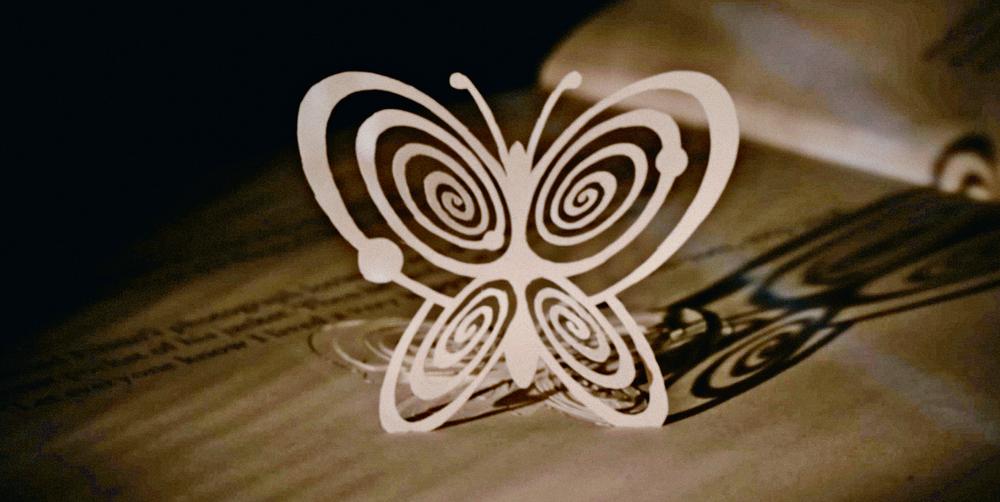I wrote the novel while thinking of the museum, and created the museum while thinking of the novel. The museum was not just some idea I chanced upon after the success of the book, nor was it a case of the success of the museum begetting the novel, like the book version of some blockbuster film. In fact, I conceived the book and the museum simultaneously, and explained their intricate connection in the novel: a young man from a wealthy, westernised Istanbul family falls in love with a poor distant relation, and when his love goes unrequited, he finds solace in collecting everything his beloved has ever touched. Finally, as we learn at the end of the novel, he takes all of these everyday objects he has accumulated postcards, photographs, matchsticks, saltshakers, keys, dresses, film clips, and toys, mementoes of his doomed love affair and of the Istanbul of the 1970s and 1980s whose streets he wandered with his lover and puts them on display in Istanbuls Museum of Innocence.
Back in the mid-nineties, when I first embarked on this artistic and literary project, my dream was to open the museum on the same day the novel was published. I would arrange the chapters in meticulous order, producing a museum catalogue that could be read as a novel a postmodern sort of novel. But I finished the book before the museum, recasting it into the form of a traditional novel, without images or annotations, and published it in 2008. When I opened the museum in 2012, I realised I still needed an actual museum catalogue to explain the design and composition of the exhibition vitrines I had so painstakingly devised, and to showcase the objects and photographs in the collection, so I wrote The Innocence of Objects.
Now, there is a fourth work, one which Id never imagined when I first embarked on this project: Grant Gees beautiful, enigmatic documentary film Innocence of Memories. This time Im not the creative force behind the work; instead, my role is that of creator of the films focus, the Museum of Innocence, and author of the texts featured in the film.
It all started when Grant Gee came to Istanbul for a screening of his ingenious film on W. G. Sebalds The Rings of Saturn. When I found out that Grant was interested in shooting a documentary about the Museum of Innocence, I was eager to get involved on the creative side. We met up in London, and talked for hours. Then we met up in Istanbul, and walked for miles. Was it Grant who asked, Is there anywhere in Istanbul that means something special to you? or was it my idea to show him around? I cant remember now. Perhaps we werent aiming for anywhere in particular, but hoping that our footsteps would help us to penetrate the emotional fabric of the city.
I ended up with conflicting feelings. As we roamed the streets, I was remembering a past that had been quietly fading away, and trying at the same time to work out which of the many things we saw might interest anyone other than me. Strolling through Istanbul with someone who was a stranger to the city Id lived in my whole life lent me a different perspective on that life, on the city, and on my memories. When we come across something beautiful or interesting, how much of that is the city itself, and how much of it is our own nostalgia? How beautiful or how interesting can a city be without the benefit of our memories? And when buildings, bridges, and squares are demolished, are our memories erased and eroded with them?
Innocence of Memories is based as much on the novel as it is on the objects that inspired it (clocks, coffee cups, photographs, clips from old movies set in Istanbul), on daydreams lyrically layered, and on the actual landscape of the city. The cameras focus on the streets where I found the objects for my collection befits my vision of what museums should be: the future of museums is in our homes, in our daily lives, and on the streets. Museums should no longer concern themselves with state histories, the sagas of kings and heroes, or the forging of national identities; they should focus instead on the lives and belongings of ordinary people, just as modern novels do. When I began to prepare for the novel and the museum, walking around the streets of Istanbul, raiding flea markets, second-hand bookstores, and the homes of friends and family for old pillboxes, ashtrays, framed pictures of mosques, identity cards, and passport photos, I realised that collecting artefacts for a museum is not very different from collecting stories and facts for a novel.
The love story in The Museum of Innocence takes place primarily between 1974 and 1980, while the museum features objects and images used and seen by the people of Istanbul and the characters in the novel across the second half of the twentieth century. But Grants curious camera was equally interested in the twenty-first-century city, the rapid, vicious urbanisation and accumulation of wealth that had taken place over the past fifteen years, and how the citys new skyscrapers now coexisted with its older, melancholy soul. What could we do?
The protagonists of our unhappy love story had died, and the house theyd lived in had been converted into a museum. So I turned to a character whod only had a minor role in the novel but nevertheless remembered the love affair clearly: Ayla. I imagined that she had left Istanbul for political reasons shortly after the time of the novel, only to find upon her return twelve years later that her city had been transformed. Just like me and Grant Gee, Ayla would go on long walks through the streets of Istanbul, while I happily transcribed her thoughts on the city, memory, and life.
This film, like the novel and museum, stems mostly from my endless wanderings in Istanbul. In the second half of the 1990s, I combed through the streets and neighbourhoods of the city centre in search of a building (that I could afford to buy) where the protagonists of my imaginary love story could live, and which I could later convert into a museum. (Houses and land were cheap back then, and there werent as many tourists around.) In 1998, I bought the first piece of my collection, the 120-year-old building in ukurcuma which now hosts the museum. I kept walking, searching for old crockery, kitchen utensils, liquor bottles, keys, clocks, cigarette holders, and photographs of everyday scenes that would have been part of the lives of the invented characters who had lived in that building. (Istanbuls flea markets, second-hand bookshops, and increasingly popular collectors of everyday paraphernalia hadnt yet embraced the internet.) I began writing a new novel called A Strangeness in My Mind around the time that I was setting up the museum, and went on long night-time walks around the poorer neighbourhoods that stood at the heart of the city and were home to the hero of this new novel, a street vendor. Sometimes I would stay in my writing studio working on this novel until four in the morning, and I loved walking back home through those night-time streets shrouded in darkness and silence. In our long walks with Grant through some of the citys more deprived, dangerous, remote, and crumbling neighbourhoods, we saw the same dogs that have been ruling the streets at night since Ottoman times. Their packs had perhaps disbanded, but lone dogs still padded patiently down the infinite streets of the city, and keenly observed our progress. On our walks, we seldom spoke; much like Grants camera in Innocence of Memories, we concentrated only on the emotions evoked by the citys darkened nooks, its ruins and shadows. Maybe thats why Grant never asked me the question everyone else always does: Why did you decide to create this museum when youd already written the novel? Had he asked, I wouldnt have given him my usual answer: I was possessed by a jinn. Nor would I have told him, When I was younger, I wanted to be a painter. Instead, I would have said, Perhaps a novel and a museum are more or less the same thing.

